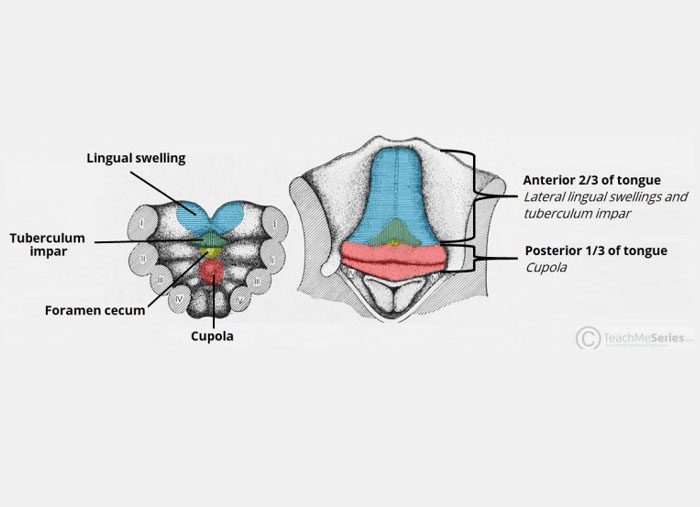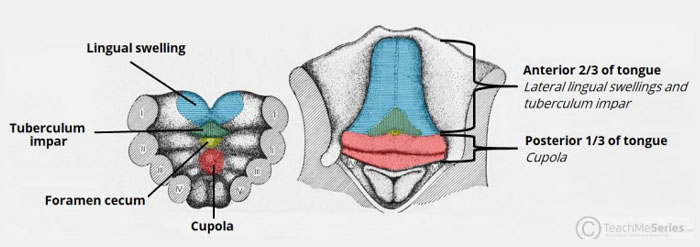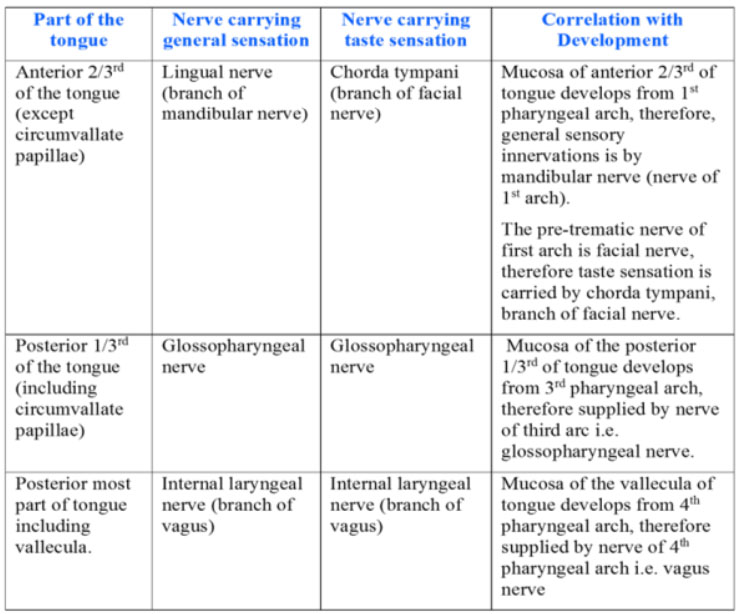- NEED HELP? CALL US NOW
- +919995411505
- [email protected]
DEVELOPMENT OF THE TONGUE

- The tongue develops from the endodermalblining of the first four branchial arches, with thebinvading muscle tissue from the occipital myotome
- In the fourth week of IUL, two lateral lingual swellings develop and one medial swelling, the tuberculum impar, originates from the ventral aspect of the first branchial arch.
- The caudal border of the median tuberculum impar is the foramen caecum, the opening of thyroid diverticulum.
- The two lateral swellings enlarge and overgrow the tuberculum impar and fuse to form the anterior two-third of the tongue
- A median swelling called copula is formed from the ventral aspect of the second, third and fourth arches.
- This forms the mucosa covering the posterior one-third of the tongue.
- The epiglottis develops from the posterior division of the copula, the hypobranchial eminence
- A V-shaped sulcus terminalis with foramen caecum at the apex separates the anterior two-third and posterior one-third of the tongue.
- The circumvallate papilla lining the sulcus terminalis develops between 2 and 5 months of IUL.
- The gustatory cells of the taste buds begin to develop by an inductive mechanism between the epithelial cells and the invading gustatory nerve cells (chorda tympani, glossopharyngeal and vagus nerves) in the 11th
week of IUL and extend after birth. - The tongue is developed from the contribution of different arches which is reflected in the nerve supply
- The intrinsic muscles of the tongue, except the palatoglossus, arise on the floor of the pharynx from the occipital myotome and are supplied by the hypoglossal nerve.
- The palatoglossus is supplied by the pharyngeal plexus.


Related posts
April 10, 2025
April 9, 2025
April 4, 2025




